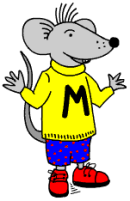Well a week off basking in the sunshine of St Ives and not a lot has happened. Perhaps the biggest news story involves CTFs. The Child Trust Fund is about to have an impact on our primary schools and maths teaching. Ed Balls (Children, Schools and Families Secretary) has announced that the CTFs should be used as tools to teach maths in the classroom.
The CTF is a long term savings scheme and the first children that benefited from these funds (CTF) will be starting school this September. Teachers have been asked to use CTFs as a way of talking about financial education in maths lessons. A range of financial materials will be based upon the CTF, allowing teachers to bring finance to life via the children’s CTFs.
Children will be taught how to open a bank account, understand basic financial concepts like interest rates and learn important skills to plan for their financial future as part of an £11.5 million boost to personal finance education.
The funding will be made available from 2008 – 2011 and will be used to:
• revise curriculum guidance on financial capability;
• produce a range of innovative curriculum resources which will use the Child Trust Fund as a tool to help children learn more about the value of money and savings;
• ensure teachers receive high quality training and support so that they have the skills and confidence to teach financial education well.
• Expand the National PSHE CPD programme to include economic wellbeing and financial capability.
Primary Schools will be sent a letter from Ed balls and Kitty Ussher encouraging them to show it to parents, reminding them they can top up their contributuions.
To find out more go to GNN (Government News Network).
 These two worksheets continue the Using and Understanding strand with a look at making subtraction number stories. Encourage children to make realistic sentences using everyday situations. Using money and measurement are often the easiest ways to make up a number story. Also encourage them to make different types of stories rather than repeating the same one with different numbers. They may need a little prompting to think of situations: tickets, change from shopping, time spent on an activity are just three ideas.
These two worksheets continue the Using and Understanding strand with a look at making subtraction number stories. Encourage children to make realistic sentences using everyday situations. Using money and measurement are often the easiest ways to make up a number story. Also encourage them to make different types of stories rather than repeating the same one with different numbers. They may need a little prompting to think of situations: tickets, change from shopping, time spent on an activity are just three ideas. This worksheet looks easier than it really is. To answer the questions correctly children need a really good understanding of the properties of 2-D shapes, including the diagonals. Kite, parallelogram, rhombus and trapezium are all shown. They should also be familiar with the term adjacent. If they can do this page then they are doing really well!
This worksheet looks easier than it really is. To answer the questions correctly children need a really good understanding of the properties of 2-D shapes, including the diagonals. Kite, parallelogram, rhombus and trapezium are all shown. They should also be familiar with the term adjacent. If they can do this page then they are doing really well!